

AUTUMN 2024
Edition Creating Healthy and Sustainable Study Habits The Importance of Co-regulation Make Your Sandpit a Standout Asset
Early
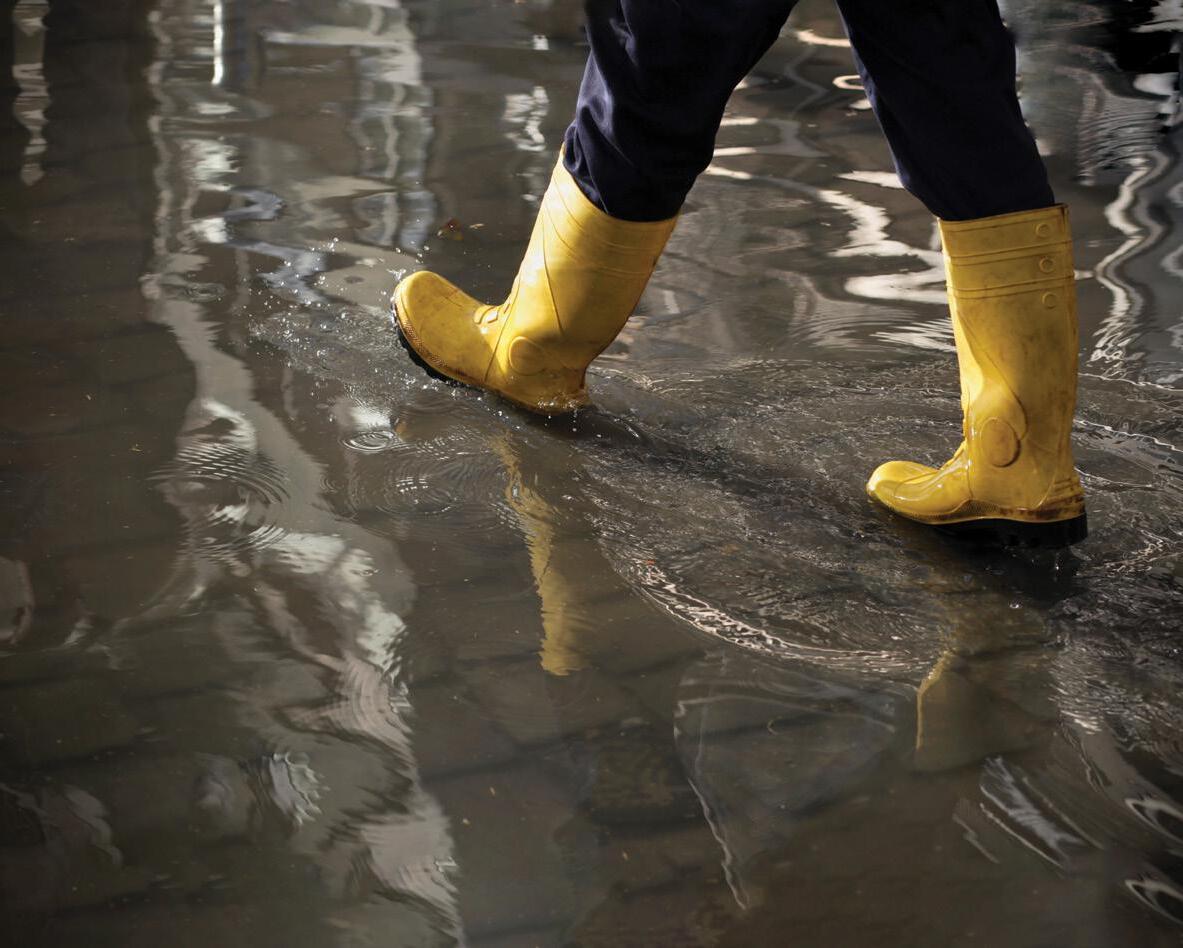
Backed by over 60 years of claims experience, Guild Insurance noticed an uptick in water damage claims at early learning centres in the last 10 years. Guild works proactively to reduce customer risks, and this increase prompted us to investigate how we could better help our customers lessen their risk of water damage, while keeping their business insurance premium increases to a minimum. Fortunately, there are devices available that can be installed by licensed plumbers that monitor for unexpected water flow and stop it
before it causes damage. To test the effectiveness of these devices, we launched a leak-stopping device pilot with 10 of our customers and 2 suppliers, Water Secure Co. and Aqua Trip. The pilot was successful with multiple pilot participants discovering first-hand a reduction in water damage and related costs.
Paul Mondo, President of the Australian Childcare Alliance, and owner of Bimbi ELC in Airport West, Victoria, participated in the pilot and thanks to the Water Secure app notifying Paul of unusual water flow, he was able to
limit the potential water damage to just one broken pipe and keep the doors open, saving the service from certain flooding that would have required the centre close for repairs.
Become part of something bigger today, scan the QR code to learn more and access our preferred provider discounts on leak-stop devices.
Insurance issued by Guild Insurance Limited ABN 55 004 538 863, AFS Licence No. 233791 and subject to terms, conditions and exclusions. Guild Insurance supports the Australian Childcare Alliance Queensland through the payment of referral fees. This information is of a general nature. Please refer to the policy wording and policy schedule for details. For more information call 1800 810 213. EAR291311 ACA QLD Early Edition Spring Ad 07/2023 Prevent water damage from flooding your business. C= 67 M= 56 Y= 52 K= 30 R= 81 G= 85 B= 88 C= 0 M= 100 Y= 49 K= 20 R= 196 G= 8 B= 75 Information on devices to prevent water damage EAR291311_ACA_QLD_Early_Edition_Spring_Ad_072023.indd 1 2/8/2023 10:36 am

ACA Qld
Location:
2/10 Welch Street, Underwood Qld 4119
Mailing:
PO Box 137, Springwood QLD 4127
Telephone:
07 3808 2366
Toll Free: 1300 365 325 (outside Brisbane)
Web: www.qld.childcarealliance.org.au
Email: qld@childcarealliance.org.au
Executive
President - Majella Fitzsimmons
Vice
- Jae Fraser
Treasurer - Louise Thomas
Executive
- Debra North
EARLY EDITION > AUTUMN 2024 1 Contents ACA Qld President’s Report 2 ACA National President’s Report 3 Re-imagining Intentional Teaching in Early Years Education 4 Enhancing Early Learning Administration in Australia with AI 6 Creating Healthy and Sustainable Study Habits 9 Building our Children’s Future with ESG 10 Member in the Spotlight 13 The Importance of Co-regulation 14 Riding the Waves of Learning 16 Child-Focused Approaches to Supporting Behaviour 18 Plants Around Children 20 Managing Through Change 21 Make Your Sandpit a Standout Asset 22 Thinking of Selling Your Centre in 2024? 26 CAECE Congratulates 30 Supporter Members Directory 32 MANAGEMENT COMMITTEE ACA Qld Office General Manager - Abed Haroun Office Manager - Jen Fimeri Administration Officer - Ebony Williams Marketing & Communications OfficerKaitlyn Chivers Administration & Accounts - Emma Travers Committee Members Dene Crocker Kerrie Lada Pam Maclean Kylie Petersen Peta Pitcher Brent Stokes Darlene Wadham
President
Secretary
Disclaimer: Articles published in this magazine are published as a service to readers and should not be substituted for specific advice in relation to any issue. While advertising in this magazine is encouraged, ACA Qld accepts no responsibility for the contents of the advertisements. Advertisements are accepted in good faith and liability for advertising content, goods or services supplied is the responsibility of the advertiser.
EarlyEdition AUTUMN 2024
ACA Queensland President’s Report

Welcome to 2024. ACA Qld has started the year with a bang, including meetings with government and other peak bodies, our annual Strategic Planning days, working with members right across Queensland and of course finalising all of the plans for our amazing conference coming up in June.
I would first like to formally congratulate Minister Di Farmer on her appointment as the new Minister for Education and Minister for Youth Justice. We were fortunate enough to have met with Minister Farmer last year at a workforce forum and to have heard her speak about the issues with workforce and her government’s commitment to addressing the critical issues facing nearly every early learning service.
The Premier of Queensland, Hon Steven Miles, is seeking feedback on how we can ensure the best start for our children. ACA Qld has put forward a submission encompassing all the essentials for children, specifically focusing on their needs.
In early and mid-January ACA Qld was fortunate enough to be at the table with government and other stakeholders, holding discussions around Kindy, Kindy Uplift, scholarships and programs to help our workforce. We are eager to see the benefits this will bring to the sector, and we’ve actively expressed the concerns of our members during these meetings.
2024 saw the start of Free Kindy and while there have been some teething problems, most services are giving positive feedback on the free 15hrs per week for 40 weeks kindergarten program. Some services have talked about an increase for children currently attending two days a week, to three or even four days as parents are able to pick up extra days without much extra cost. We continue to work with government and software providers and if there is anything you require, please reach out to the kindy email address kindyqld@ childcarealliance.org.au or ring our office on 07 3808 2366.
The ACA Qld Committee spent two days in January meeting to discuss and map out our Strategic Plan for 2024. We started by looking at our wins and we were surprised by how much ACA Qld accomplished in 2023. This gave us a good basis to keep developing some of these wins and create others. One of the items discussed at length was workforce – with planned professional development opportunities for all of your teams and networking opportunities for APs as well. Stayed tuned to your email address for the latest updates.
Jae Fraser (Vice President) and I were very fortunate to attend a two day workshop in Sydney late in February. These two days gave us valuable insight in the enterprise bargaining agreement and the ask for a government
funded wage rise. We also talked at length about the productivity commission and detailed a report on feedback to the productivity commission.
2024 is an election year for Queensland and we have released our ACA Qld Election Manifesto. We are calling on all services to reach out to all candidates to have a conversation about what is needed for the early learning sector. In our upcoming round of member meetings in April, we will go into further discussion and explore how you can contribute to shaping government policies concerning our most valuable resource.
Have you got a ticket to this year’s conference, See the Wonders of Early Education? Our Program is guaranteed to make you laugh and make you cry, provide some amazing ideas for you and your teams, ensure you learn something new, and includes the Under the Sea themed conference gala dinner. Tickets are selling fast so register now for you and your team before they are sold out.
Majella Fitzsimmons ACA Qld President
EARLY EDITION > AUTUMN 2024 2
ACA President’s Report

Having said farewell to 2023, I want to extend my warmest wishes to our ACA Queensland members for a great start to the new year. In 2024 there are a range of major external factors currently at play which may ultimately change the shape of our sector. Our goal is to strongly advocate for you in this context to achieve the best possible results.
Political advocacy
In 2024 ACA’s policy work will continue to focus on the two major issues for our sector - the national workforce shortages and the ongoing wellbeing of our early childhood educators.
Following our ongoing political advocacy last year, we are heartened that the relevant Federal Government Departments and agencies appear to have recognised the severe impact of staff shortages and the critical need to support our existing workforce with positive working conditions whilst developing an ongoing pipeline of new, qualified candidates for the sector. This recognition is reflected in the interim findings of the Australian Competition and Consumer Commission (ACCC) inquiry and the Productivity Commission (PC) inquiry.
The ACCC has now released its final report, which reflects the feedback from key sector stakeholders (including from the ACA) regarding the observations and recommendations in the ACCC’s September Interim Report. The final report reflects the complexity of the early learning sector, acknowledging that it services a set of diverse communities and geographic locations that would benefit from tailored responses rather than a one-size-fits-all solution.
The report also acknowledges that staff wages make up an enormous proportion of operating costs and recommends a better regulatory framework to attract and retain ECEC workforce. The ACCC has acknowledged the national workforce crisis and that in particular, staffing issues are a huge barrier to set up and continue a service in a remote or under-serviced community.
Whilst the report acknowledges that excessive “price gouging” is not a systemic issue, the recommendations suggest some form of price monitoring, possibly via an independent body. This is a measure also discussed in the PC’s November Draft Report.
We are therefore now in the process of producing some accurate, meaningful feedback to the questions raised from the PC’s November Draft Report, which focuses on the possible improvement of funding models and government support for the sector. Following ACA and other sector stakeholder feedback, the PC is expected to provide its final recommendations to the government at the end of June 2024.
The recommendations from both of these inquiries will be critical in informing the Federal Government on the complexities of our sector in the context of developing new policy and potentially new funding models, so we thank you again for your feedback over the past year to help us provide the most accurate picture possible.
Industrial relations - supported bargaining process
As discussed above, ACA’s political advocacy around the sector’s urgent needs have fed into this industrial relations process and how the Federal Government chooses to support a wage rise. Having had a number of meetings since last year, the supported bargaining discussions have so far been productive.
ACA is pleased to report that there is strong consensus among all non-government parties - we all agree that a government-funded pay rise is critical to ensure that families don’t wear the costs. This consistent voice will strengthen our position in ongoing negotiations.
We will provide you with updates as the negotiations process moves forward and new information comes to hand.
Our 2024 Executive Committee
At the end of 2023 we farewelled our Treasurer Kerry Mahony, who has chosen to take a step back from his role after more than a decade of dedication to our board. We thank Kerry for his dedication to the early learning sector and wish him all the very best as he shifts his focus towards family and other endeavours.
We also welcome ACA Queensland Vice President Jae Fraser to his new role as Treasurer for ACA National. Jae has kindly volunteered to take on this important role and we will very much appreciate his expertise and dedication.
Our ACA 2024 Executive Committee is therefore made up of myself as President, Nesha Hutchinson as Vice President, Ann Marie Chemello as Secretary, Jae Fraser as Treasurer and Ordinary Members Lyn Connolly and Jackie Jackman.
We’re looking forward to another productive year working together on behalf of our ACA members to achieve the best possible outcomes for the early learning sector.
Paul Mondo | ACA President
EARLY EDITION > AUTUMN 2024 3

Re-imagining Intentional Teaching in Early Years Education: A PlayBased, Child-Centric Approach
Brianna Thorne > Phoenix Support for Educators
‘Intentional teaching’, is a familiar term among education and care professionals. In the past, we’ve often seen it as a heading of a box on a program, and under that heading a teacher-led activity planned for group time. It has frequently been misunderstood and misinterpreted in this way, so, is it any wonder some professionals love the term, and others love to hate it?
But what exactly does it entail, especially in a child-led, child-centric practice context? The revised Early Years Learning Framework (EYLF) version 2.0 introduces a shift from the traditional notion of Intentional Teaching to an emphasis on Play-based Learning and Intentionality. This pivotal change begs the question: How does this redefine our understanding of intentional teaching?
Intentional Teaching was born
Originally, the first version of the EYLF highlighted intentional teaching as a core practice area, defined as educators engaging in deliberate, purposeful, and thoughtful actions (DETE, 2010). Although the framework proposed strategies like modelling, questioning, and shared thinking, it inadvertently led to various misinterpretations within the sector.
As professionals, we now reject the idea of children and the human mind as being an ‘empty vessel’ or a blank slate. The thinking has a long history dating back to
Children are not empty vessels.
Aristotle. This outdated notion has proven neither helpful nor accurate in understanding children’s learning, yet it subtly influenced the application of intentional teaching, often leading educators to inadvertently adopt this perception.
Embracing Play-Based Learning and Intentionality
EYLF version 2.0 shifts the focus towards the depth and richness inherent in play-based learning. It empowers educators to engage in play with intentionality and thoughtful purpose, enriching the learning experience in the moment.
EARLY EDITION > AUTUMN 2024 4
“Children act intentionally and with agency in play. This is demonstrated when children make decisions, and with what and with whom to engage and invite into their play. Neural pathways and connections in the brain are stimulated when children are fully engaged in their play as they make plans, create characters, solve problems, develop self-awareness and learn how to socialise, negotiate and think with others. Children’s immersion in their play illustrates how play enables them to simply enjoy being” (AGDE, 2022, p.21).
Spontaneous Teachable Moments
Experienced educators and caregivers recognise that children’s most profound insights often emerge spontaneously and unexpectedly. When adults formally question children and attempt to give them knowledge through explanations or structured group learning, we often find children’s responses will be predictable in nature. The adult-led idea of concepts such as group times is often creativity-dampening for children. True innovative thinking, and therefore deep, exploratory thought happens during everyday interactions, during play and when challenges present themselves to us in those moments.
The shift from group times to intentional interactions
While structured experiences like group times enable educators and teachers to have a clear direction for their educational plans, these curriculum decisions pose many barriers to children’s learning and wellbeing. To foster creativity, exploration, and independent thinking—essential for developing innovative, forward-thinking learners— adult-led group times are insufficient. Young children engage in less imaginative play and complex interactions when teachers direct their learning. In the early years, children do not learn by sitting still in large groups and listening to formal instruction. Children in more teacher-led settings will often engage in Freedom Seeking behaviours (coined as Freedom Cup® filling in The Phoenix Cups® framework) in order to meet their basic needs.
The power of uninterrupted play
So, if well-intentioned, formal group times and structured learning hinder deeper learning for children, what practices foster deep-level learning and engagement?
The answer is play. Uninterrupted, unadulterated, sustained play. Play integrates all domains of children’s development and it is through play that children’s intellectual skills are developed as they explore, discover, experiment, hypothesise, and problem-solve. Play fosters children’s sense of self-worth, wellbeing, and in turn their sense of identity.
How to play with Intentionality
Quality interactions between children and trusted adults are crucial not only for learning but also for brain development. These connections foster a strong sense of self-worth and belonging in children, enabling them to confidently explore new skills and experiences.
Playing with intentionality doesn’t mean constant educator involvement. Instead, a balance of observation, support, participation, scaffolding, guidance, and resourcing for play can deepen children’s engagement and make the
self-directed learning process enjoyable for both children and educators. The key to intentionality is the educator’s attunement with children, deep listening, and finding a balance that is guided by meaningful observations of children.
Integrating Different Approaches to Play
Let’s challenge ourselves to view educational planning as an evolving journey, not a closed-off planning cycle. When we close off each cycle, our planning innately becomes adult-led as we seek the opportunities we need to find that evidence in order to conclude our planning cycle.

If we shift our thinking and re-consider this – our planning is not a cycle, it never ‘finishes’, and our cycle never ‘closes’. Instead, it morphs and grows. We still observe, document, implement, evaluate, and reflect, but instead of a concept concluding, it evolves. This perspective allows for a blend of child-directed, guided, and adult-led play, facilitating a co-constructed educational program that extends and adapts over time.
As we embrace the next transformation in Australian Early Years Education, let’s collectively step into a future where play-based learning and intentionality are the cornerstones of our teaching approach. This shift empowers us to create enriching, child-centric learning experiences that value the unique insights and creativity of each child. Together, we are redefining education with every spontaneous moment and every playful interaction, as we learn with this generation of innovative, confident, and connected learners.
By Briana Thorne, Education Coach and Mentor at Phoenix Support for Educators. www.phoenix-support.com.au
References
Australian Government Department of Education. (2022). Belonging, Being and Becoming: The Early Years Learning Framework for Australia (V2.0).
Australian Government Department of Education and Training. (2010). Belonging, Being and Becoming: The Early Years Learning Framework for Australia.
Aristotle. (n.d.). On the Soul. Retrieved from http://classics.mit.edu/ Aristotle/soul.3.iii.html
EARLY EDITION > AUTUMN 2024 5

Enhancing Early Learning Administration with Artificial Intelligence
Abed Haroun > ACA Qld
In recent years, Artificial Intelligence (AI) has become a transformative force across various industries, and early learning service administration in Australia is no exception. The integration of AI technologies can streamline processes, improve efficiency, and enhance overall service management. In this article, we will explore how AI can be applied in the administration of services, providing practical advice for centre directors and administrators.
When selecting childcare management software with AI capabilities, prioritise an intuitive interface for easy navigation. Look for features like automated attendance tracking, billing, and invoicing, rostering, and AI-driven communication tools to streamline operations. Ensure the software provides personalised learning recommendations, predictive analytics for resource planning, and robust security measures, including access control and mobile accessibility. Choose a scalable and customisable solution with a strong support system for team training and ongoing assistance. By considering these features, early learning services can implement user-friendly software that optimises efficiency and enhances the overall management.
Automated Administrative Tasks
One of the primary benefits of AI in administration is the automation of routine tasks. AI-powered systems can handle administrative duties such as attendance tracking, scheduling, and billing. Implementing a robust childcare management software that utilises AI algorithms can significantly reduce the administrative burden, allowing team members to focus more on providing quality care to children.
Suggested Action: Research and invest in user-friendly childcare management software that incorporates AI for automated administrative tasks. This will save time and ensure accuracy in attendance tracking, scheduling, and financial transactions.
EARLY EDITION > AUTUMN 2024 6
Embracing these AI-driven solutions can empower administrators to focus on what matters most – the well-being and development of the children in their care.
Enhanced Communication
Effective communication is crucial in early learning services, involving parents, team, and administrators. AI-powered communication tools can streamline this process, sending automated updates on a child’s activities, progress, and important announcements. This not only keeps parents well-informed but also fosters a transparent and collaborative relationship between the early learning services and families.
Suggested Action: Explore communication platforms that leverage AI for automated messaging and updates. Ensure parents have access to real-time information about their child’s day, fostering trust and engagement.

Personalised Learning Programs
AI can be a valuable tool in tailoring educational programs to meet the unique needs of each child. By analysing individual learning styles and progress, AI algorithms can recommend personalised activities and educational materials. This not only benefits the child’s development but also enables educators to adapt their teaching methods for maximum effectiveness.
Suggested Action: Collaborate with educators to explore AI-powered tools that offer personalised learning recommendations. Implementing these tools can create a more tailored and engaging educational experience for each child.
Predictive Analysis for Resource Planning
AI’s predictive analysis capabilities can assist services in resource planning. By analysing historical data on attendance, enrolment patterns, and team requirements, AI algorithms can predict future needs. This enables administrators to proactively plan for staffing levels, room resources, and other essential elements.
Suggested Action: Invest in AI-based analytics tools to analyse historical data and predict future resource needs. This proactive approach ensures that services are adequately prepared for fluctuations in attendance and can optimise resource allocation.
Enhancing Safety and Security
Child safety is a top priority for early learning services, and AI can play a significant role in enhancing security measures. AI-powered surveillance systems can monitor the premises, detect unusual activities, and ensure a safe environment for children. Additionally, facial recognition technology can enhance the check-in and check-out process, adding an extra layer of security.
Suggested Action: Evaluate AI-driven security solutions for services, incorporating features such as surveillance, access control, and facial recognition. This investment can significantly contribute to the overall safety and wellbeing of the children under your care.
Conclusion
While integrating AI into early years management brings undeniable benefits, it is crucial to safeguard against the erosion of the humane touch in early childhood. AI should complement, not replace, the empathetic and nurturing interactions provided by caregivers. Human connections, understanding emotions, and responding to individual needs are intrinsic to early childhood, and AI should be employed to enhance efficiency rather than overshadow the essential human element. Striking a balance ensures that technology supports the education and care process without compromising the unique and irreplaceable warmth that comes from genuine human interaction in the early childhood setting.
The integration of Artificial Intelligence in the administration of early learning services holds immense potential for improving efficiency, communication, and overall quality of care. By automating administrative tasks, enhancing communication, personalising learning programs, utilising predictive analysis for resource planning, and bolstering safety and security measures, early learning services can provide a more effective and nurturing environment for both children and their families. Embracing these AI-driven solutions can empower administrators to focus on what matters most – the well-being and development of the children in their care.
EARLY EDITION > AUTUMN 2024 7





RTO: 40933 APPLY NOW 2024 Experience the CAECE Way: Study your way: a blend of online, workplace and study sessions Supported by experienced trainers Connect with industry leaders Become a quality educator Get qualified with CAECE! CHC22015 Certificate II in Community Services CHC30121 Certificate III in Early Childhood Education and Care CHC50121 Diploma of Early Childhood Education and Care HLTAID012 Provide First Aid in an Education and Care Setting HLTAID009 Provide Cardiopulmonary Resuscitation (CPR) What can your college do for you? Find all your Early Childhood Education and Care study needs at CAECE. www.caece.com.au | 07 3299 5784 Contact us today to find out how else we can support you in advancing your Early Childhood Education and Care qualifications! To see all the courses we offer, visit www.caece.com.au or call 07 3299 5784.
Creating Healthy and Sustainable Study Habits
Cris Romao > CAECE

Congratulations on taking the courageous step to embark on your studies – a significant decision that you should be incredibly proud of! Now, as you stand on the threshold of time, encompassing days, dates, and hours, success in your studies requires effective time management. Balancing this with other aspects of life and personal well-being can be challenging, but this article aims to guide you with small steps toward completing your qualification.
When you decide to embark on the journey of studying, whether to change careers, develop skills, acquire more knowledge, seek a better salary, or strive for a promotion, you are unequivocally looking towards the future and charting a positive course in life. Embracing challenges and changes is a testament to your commitment to personal and professional growth.
While the human brain naturally gravitates towards routines to conserve energy and minimise risks, research also highlights the psychological benefits of having routines, such as predictability, planning, and clear expectations.
As you commence this transformative journey in your studies, it’s crucial to create pathways that will provide robust support. To ensure your success, we are eager to share some motivational tips with you:
1. Dedicate 30 minutes per week to your studies from the beginning. Choose a specific day and time each week, make it a commitment, and simply do it! Thirty minutes a week will feel more manageable than extended study sessions. You can build this time up later if necessary. Build the habit early so it won’t be so hard later!
2. Prepare in advance: In the six days leading up to your study time, make notes about what needs to be accomplished and gather the necessary information.
3. Active engagement: If you’re reading during those 30 minutes, take notes, save resources, and jot down any questions that arise.
4. Eliminate distractions: Set a realistic timeframe for studying and remove distractions. If you’re on the phone or using social media, that isn’t considered studying. Create a focused environment during your study time.
5. Choose a suitable day: Set yourself up for success by avoiding scheduling study time on your busiest day.
If, for example, Wednesday is your most challenging workday and you’ll likely be exhausted, opt for a different day.
6. Communication is key: Reach out to your trainer via email, text, or phone call to clarify information. Remember, your trainer is there to support you.
7. Set goals: Check the resources and training requirements for each unit. Commit to submitting tasks and reward yourself when you achieve milestones.
8. Break down your tasks: Just like eating a cake one bite at a time, approach your studies in manageable chunks. Instead of focusing on the distance you have yet to cover, reflect on what you have accomplished within the timeframe you’ve set. Celebrate your progress, and remember, success is built one step at a time. Keep moving forward!
9. Share your journey: Inform others about your study commitments. Sharing your goals with others increases your accountability and commitment.
When you embark on your studies with CAECE, rest assured that you are not alone. Our dedicated and motivated team, from the Administration staff to your Trainer, are here to support you every step of the way. We celebrate each milestone and progress you make as we work together to bring you closer to your goals. Your journey not only shapes your future but also contributes to support the early learning sector with top-quality educators. Let’s celebrate your achievements and make a positive impact in the field together!
Remember, every small step you take brings you closer to completing your qualification. Stay committed, stay focused, and celebrate your successes along the way! If you need any help, please contact us at enquiries@caece.com.au, or call 07 3299 5784 and our team will be happy to assist you.
EARLY EDITION > AUTUMN 2024 9
Building our Children’s Future with ESG
TG’s Child Care
Many companies worldwide are actively integrating ESG (Environmental, Social, Governance) principles into their operations to evaluate their impact on sustainability and society. However, ESG is not limited to corporate entities; it can be seen in early childhood education too.
Starting young, it becomes crucial for children to participate in creating a sustainable and enriching future. Early childhood services that prioritise ESG create an environment that fosters individual development while instilling sustainability values. This equips children with the necessary tools to confidently navigate their future.
Incorporating ESG into daily practices can serve as a powerful enhancer of a business strategy for early childhood services. Education is a long-term vision, extending beyond a child’s graduation. Services need to ensure their curriculum remains sustainable and relevant in our ever-changing world. To incorporate ESG, early childhood services can consider various approaches aligned with their mission and values. At TG’s Child Care, ESG is integrated into their mission of nurturing independent young minds through Playing is Learning for Life, fostering collective thinking with peers, and earning the trust of families and communities as stewards of children’s future.

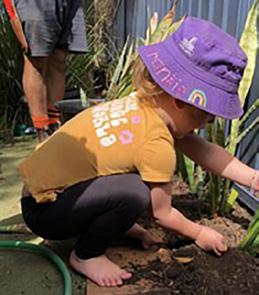
> Setting a good role model in ESG for children to follow.
Caring for our Environment
Early childhood education is an ideal time to introduce children to the importance of caring for the world around them, and boosting their eco-intelligence.
By teaching them to care for plants and animals, we show trust in their abilities and belief in their contribution to the world. Even small actions like taking cans or cartons to recycling centres can make children more mindful of their environmental impact. Separating rubbish can even be turned into a fun activity. Children are really knowledgeable about ensuring the right material goes into the right bin!

> Every little effort counts!
Cultivating vegetable gardens helps children develop eco-consciousness and respect for the environment. It also fosters appreciation for the food they eat when they understand the effort involved in caring for a garden. Implementing practices like farm-to-fork or creating a worm farm using kitchen scraps can make sustainability and recycling visible, fun, and interactive for children. And children love getting to know the worms!
Eating seasonal foods from local farmers not only teaches children about their immediate environment but also supports local trades, connecting to the social aspect of ESG.
Exploring nature and indigenous culture through activities like bush kindy or beach kindy provides exercise, fresh air, and opportunities for Playing is Learning for Life.
> Welcome to your new home, little worm! We’ll take care of you!

EARLY EDITION > AUTUMN 2024 10
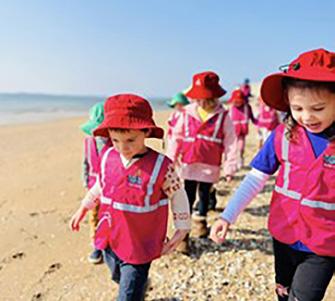
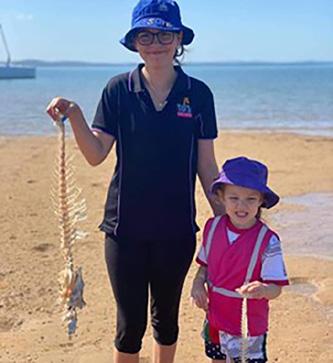
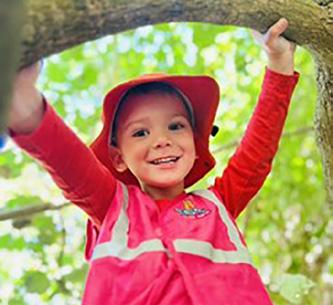
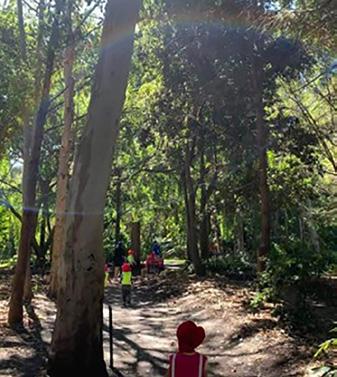
Supporting our Community
Early childhood education is crucial for developing social skills, empathy, and cultural awareness in children. By creating an inclusive environment, children are equipped with the ability to embrace differences, form friendships, and become caring members of society.
Activities that encourage teamwork, community engagement, and understanding others’ emotions help shape their social abilities and foster a sense of belonging. Children begin building relationships within their families, with friends, neighbours, and their wider communities. It’s important to recognise each person’s unique strengths and think collectively as a whole. When children understand the impact of their actions on others, they grow up to be valuable and dependable community members. Being mindful and having empathy for the feelings of others begins by giving children and Educators the safe space and tools to care for their own mental health. At TG’s Child Care, the children have a Mindfulness Area while Educators have a Mental Health Workplaces Toolkit to help them manage their mental health and wellbeing. Connection and Community support economic sustainability, and early learning services can contribute by employing local tradespeople, sourcing local products, and inviting community members like health workers, ambulance officers, police and firefighters to share their experiences with the children.


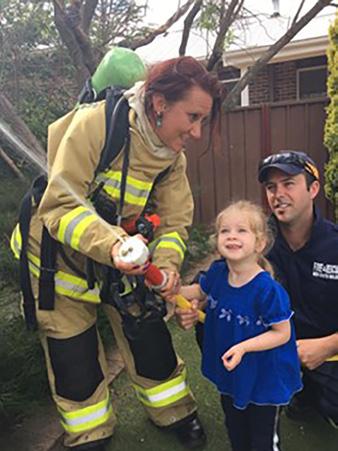
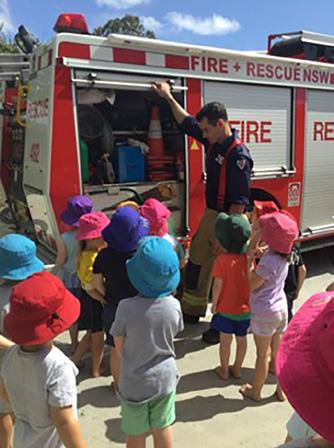
EARLY EDITION > AUTUMN 2024 11
> Say hello to your friendly neighbourhood grocery shop!
> Remember to put on your sun hats if you’re out on a beach or bush kindy on a sunny day!
> An afternoon with the firemen will have the children talking about it excitedly for days!
Participating in local festivals can also help children feel a sense of belonging and identity within their communities.
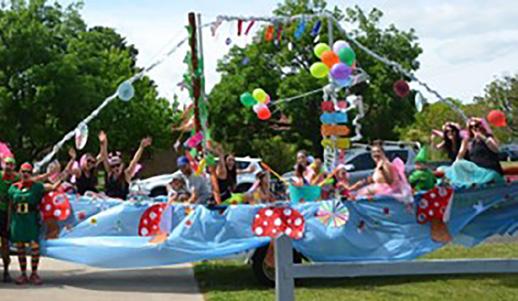
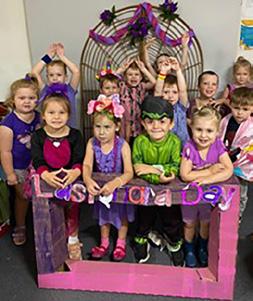

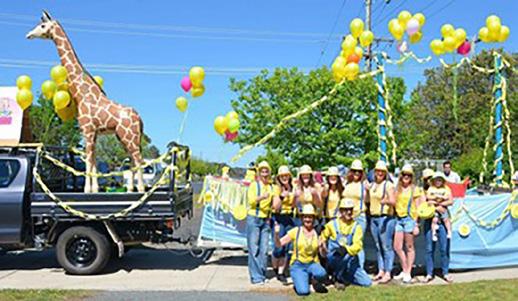
> From the Thunderbolt Festival to the Lasiandra Festival, there are lots to participate in, in each community!
It’s also important to approach global issues, such as drought or floods, in an age-appropriate manner, helping children understand and appreciate the efforts made to keep them safe. Engaging children in real-life learning experiences, like creating appreciation baskets and gratitude notes, fosters compassion, empathy, and confidence.
Good Governance
Good governance in early childhood education refers to the principles and values that govern the educational institution. By ensuring transparency, ethical behavior, and accountability, we create a space where children can learn not only academic skills but also the importance of fairness, responsibility, and respect. A strong governance framework sets the stage for a safe and nurturing environment that encourages a child’s overall development.
Good governance is also key to ensuring compliance is adhered to. It creates an environment that fosters innovative processes, empowering sustainable businesses to enhance stability and profitability.
Why ESG is key to every learning environment
ESG benefits everyone involved. Educators who practice sustainable habits naturally share them with their families and friends. They prioritise their mental health and become caring individuals to those around them. With good governance, Educators can value their work environment, which supports their growth and well-being.
It is never too early to introduce children to Being, Belonging and Becoming with ESG values. A comprehensive education should go beyond academics and focus on nurturing essential lifelong skills for children to reach their full potential.
An ESG-focused learning environment promotes emotional, social, and ethical growth in children. It aims to cultivate responsible future citizens who genuinely care about the environment and contribute positively to society. ESG values teach children the significance of ethical decisionmaking, environmental responsibility, and social justice. These values will stay with them throughout their lives.

> Children are the stewardship of their future planet. Watch them lead the way!
By trusting and empowering children, Educators prepare them to tackle the challenges our planet faces and guide them towards a greener and more sustainable future. They have the potential to drive positive change.
When you see a child, envision them not just as someone fascinated with their own little world, but as an incredible and confident individual who can shape the future, embrace diversity, and make a positive impact on society and the planet.
EARLY EDITION > AUTUMN 2024 12
Member in the Spotlight
Queensland Childcare Services

Over the past decade, The Healthy Cooking Company has been dedicated to preparing nutritious, healthy meals for Queensland Childcare Services (QCCS) centres across South East Queensland. At the forefront of this initiative is the company’s Accredited Practising Dietitian and Chef, Jim Arrowgros, affectionately known as “Mr Jim”. Regularly engaging with childcare centres Mr. Jim conducts nutrition workshops, imparts cookery skills, and runs physical education programs.
Recent research underscores the profound impact of a family style dining approach on positive health outcomes. Armed with this knowledge, Mr. Jim collaborates with the QCCS team to create a meaningful dining experience called Family Style Dining, for the children. Dining together fosters positive relationships with food and bodies, offering numerous benefits. Children participating in family style meals tend to consume higher amounts of fruits and vegetables, attributed to consistent exposure and positive role modelling by parents, educators, and older siblings. This practice is associated with lower nutrition related health complications later in life.
Beyond nutritional benefits, family meals provide a safe environment for children to share stories, ideas, and feelings, facilitating the identification of any behavioural changes that may require attention. Significantly, young adults who frequently dined with their families during childhood reported having better relationships with their parents.
The family style dining approach also promotes a responsive feeding environment for the children, where Educators respect a child’s appetite by responding to their cues. Engaging during mealtimes helps children recognise their own hunger and fullness signals, emphasising the caregiver’s role in providing healthy, appealing food and a positive eating
environment. Ultimately, it is the child’s responsibility to decide what and how much they want to eat.
While the family style dining approach is integral, it is just one facet of the tools employed by Mr. Jim to foster healthy children. During his visits to QCCS centres, he conducts hands-on nutrition workshops spanning all ages. These workshops include food tastings, basic cookery skills, and an innovative lesson on digestion, where children learn about the digestive process through interactive activities.
Recognising the importance of a balanced lifestyle, Mr. Jim runs the Perceptual Motor Program (PMP), a physical education initiative aimed at developing children’s strength, body awareness, and confidence. By incorporating carefully selected games, the program not only normalises daily exercise but also conveys the message that physical activity can be enjoyable. Given the concerning statistics indicating that less than half of Australian children meet physical activity guidelines, initiatives like PMP are crucial in instilling healthy habits from a young age.
Mr. Jim’s holistic approach extends beyond nutrition and exercise to encompass workshops, staff training, games, and education. In the era of pervasive social media influence, it is imperative to empower children
with confidence and knowledge, fostering positive relationships with their bodies and the ability to make healthy, sustainable choices as they grow and age.
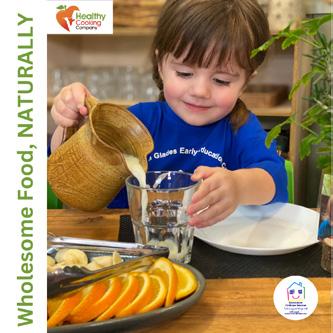

EARLY EDITION > AUTUMN 2024 13

The Importance of Co-regulation
Kari Sutton
We all experience anger, fear, frustration, sadness, rejection, disappointment, jealousy, and guilt at different times; they are simply part of being human. Self-regulation enables us to regulate and manage how we react to our emotions. Self-regulation is the crucial foundation for children’s healthy social and emotional development. Before they develop other social and emotional skills, children first need to develop the capacity for self-regulation - the ability to manage their thoughts, feelings, and actions.
Self-regulation is not a skill that can be taught, it is something that has to be modelled and experienced through co-regulation hundreds and hundreds of times. Just like children learn by doing when they learn to play an instrument or ride a bicycle, they learn how to self-
regulate by experiencing co-regulation, where an adult brings them back to calm. These experiences of coregulation enable children to develop their own neural pathways they can use to independently bring themselves back to a calm state.
EARLY EDITION > AUTUMN 2024 14

5 ways we can help children co-regulate.
1. Self-regulate first
During their big emotions and challenging behaviours, children need us to be their calm safe place. It can be incredibly challenging to deal with a child who is extremely upset and irrational. Their nervous systems will pick up on what our nervous systems are doing, so we need to self-regulate first. Take a few deep breaths, clear your mind, and focus on being calm. Our self-regulation serves as a model of how to control their emotions for the child.
2. Listen empathetically and validate feelings
When we listen empathetically to children’s concerns, we are showing them that we respect them, take their emotions seriously, and understand how they are feeling. We don’t have to accept or validate their behaviour if it’s inappropriate, but we do need to validate their feelings and demonstrate our care and empathy for them.
3. View emotions as an opportunity for connection and teaching
Even though it seems counterintuitive, a tantrum is the best time to connect with a child and use it as a teachable moment. I admit this doesn’t feel like the most rational thing to do when a child is hurling objects or verbal abuse at you. When children encounter challenging situations like not wanting to share a toy, falling out with a friend, or being teased, it is a wonderful opportunity to connect with them, demonstrate empathy for how they are feeling and help them through the challenging situation by remaining calm, comforting them physically, speaking calmly to them, removing them from the stressful situation if needed and modelling self-regulation strategies such as taking slow deep breaths.
4. Helping the child verbally label emotions
When children can label their emotions and talk about the big scary feelings, they are having, these will dissipate more quickly. As adults, we have the words to describe our feelings; young children don’t. We need to help them develop a broad emotional vocabulary so they can label the feelings they’re having. Dan Siegel in his book The Whole-Brain Child
has shown that when people can describe and label their intense feelings, this has a calming effect on their nervous system and helps them recover from upsetting situations or incidents more quickly. Putting their feelings into words helps children define what’s happening for them and helps transform big, scary, overwhelming feelings into something that other people feel too and that can be managed (with some guidance and help at first).
5. Setting limits while helping the child problem-solve
Once we have acknowledged the emotion that sits behind the tantrum or other challenging inappropriate behaviour and have helped children label it, we then need to ensure they understand that some behaviours are inappropriate and will not be tolerated. All feelings are acceptable — but all behaviour is not. You can gently guide children to develop this understanding by saying something like “you’re mad at Jenny because she took that doll off you, I would be upset and angry too. But it’s not okay for you to pull her hair. What could you do instead?” We need to provide scaffolding and guidance for children to come up with ideas about possible solutions that are effective and consider other people’s feelings.
Our children don’t need us to be perfect they need us to be there for them, gently guiding them through the tough time they are having and being the safe, calm harbour in the middle of their storm.











EARLY EDITION > AUTUMN 2024 15
Starting a trainee? Upskilling? Looking to advance your career? Enrichingfuturestogether www.ectarc.com.au RTO#90331 Traineeship/ Apprenticeship Funded Program Flexible Study CHC30121 Certificate III in Early Childhood Education and Care 10983NAT Certificate III in Outside School Hours Care CHC50121 Diploma of Early Childhood Education and Care CHC50221 Diploma of School Age Education and Care Let ECTARC do the training - commence today!
Riding the Waves of Learning: Easy Ways to Teach Beach Safety to Under 5s
Emma Lawrence > Kids Alive
Summer in Australia isn’t just about sun and surf; it’s a crucial time for something far more important - teaching our kids about water safety. With families hitting the beaches and pools, it’s the perfect backdrop to make water safety lessons stick in those curious little minds. At Kids Alive, we’re all about turning this serious topic into something fun and engaging. We’re constantly whipping up creative tools and materials to help educators weave these lifesaving lessons into their daily curriculum in a way that’s as enjoyable as it is educational.
New Beach Safety Song
The lyrics of our new song, “Let’s Go To The Beach,” underscore the importance of staying safe near water. Set to a lively rhythm, it teaches children about the sun, surf, sand, and safety in a fun, engaging way. From the sunscreen dance to the lifesaver dance, every verse is an opportunity to extend young minds to learn about beach safety through song and movement.
Sensory Play and Learning
At Kids Alive, we understand that early childhood education is most effective when it’s interactive and sensory based. That’s why we’ve developed a series of sensory play sessions, perfectly complementing the themes of our song. Most of our materials complement each other enabling a layered impact with teaching through a variety of elements. With all our materials it’s not just about fun; they’re about fostering fine motor skills, handeye coordination, and environmental awareness.
Activity Highlight: Adventures at the Beach
“Adventures at the Beach - Beach Clean Up!” session involves a combination of dry and wet play materials, making it ideal for preschoolers and toddlers. Through this activity, children engage in a hands-on experience with different textures, enhancing their tactile skills while learning about what belongs in our oceans and what doesn’t.
Creating a Sensory Beach
To recreate a sensory beach, you can use coloured rice as a base. This is simple to prepare: mix rice with food colouring and vinegar, then let it dry. Once ready, children can engage in various activities like pouring, scooping, and creating noise with rice shakers. These activities are crucial for developing fine motor skills and auditory processing.
Incorporating Reading Material
Alongside these sensory experiences, we encourage incorporating our books into the sessions. Our new toddler book “Wise Owl at the Beach” and “Adventures with Boo at the Beach” reading material. This adds a narrative layer to the sensory play, reinforcing lessons about beach safety and the importance of swimming between flags. Including our song Let’s Go to the Beach adds to the auditory impact of the lesson.
A Safe and Fun Learning Environment
Beach safety is an important concept to teach little ones and our aim is to make it as easy as possible for educators to incorporate vital water safety lessons into their curriculum. By creating a full sensory experience for children, the impact of the message is stronger and provides your students with an immersive and educational experience.
Let’s make learning about water safety fun and memorable!
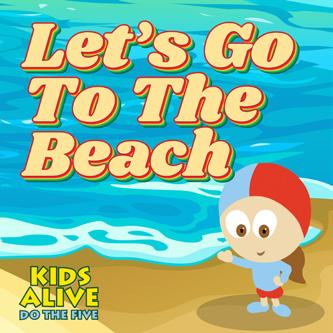


EARLY EDITION > AUTUMN 2024 16
Free resources for educators are available at www.kidsalive.com.au. Listen to all our music at https:// gyro.lnk.to/KidsAliveDoTheFive
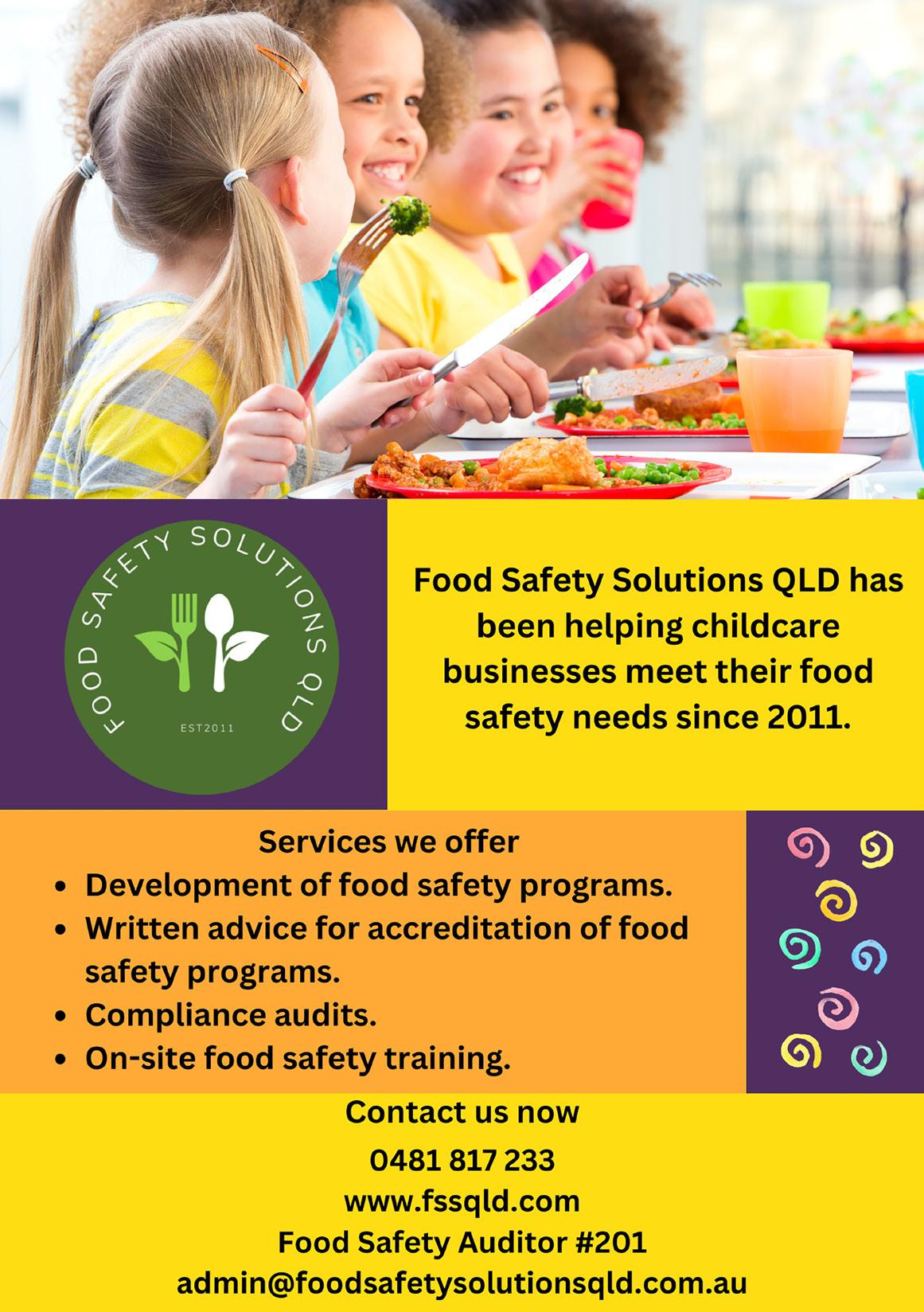

Child-focused Approaches to Supporting Behaviour
Rachel Rooke > RARE Early Childhood Support

Children’s behaviour is something I am asked about often, how to ‘fix’ it, how to ‘manage’ it, how to ‘control’ it. All of these terms are based around the assumption that children are somehow doing something wrong and need to be corrected, rather than thinking they are responding to the world around them in ways that are developmentally appropriate. By exploring some of the different factors that contribute to create safe, secure and responsive environments, we can explore holistic ways to support children’s behaviour within the early childhood setting.
Creating a safe space
Maslow’s hierarchy of needs identifies that humans need their basic needs met first, before they can concentrate on their emotional needs, and then when these are all in place we can access the greatest potential for learning and achievement as we have a strong foundation. When we translate this to the National Quality Framework we need to focus on creating a compliant and safe space for children as our top priority.
While many services feel pressure to prioritise learning with planned topics and schools readiness, this may be contributing to children’s behavioural needs as they are being asked to use their rational thinking brain when they are not feeling safe and secure, and as such are trapped in using their emotional neurological responses. Reflect on whether you are creating a safe foundation for children through consistent and predictable practices around areas such as safe environments, adequate supervision, reduced incidents and injuries, and supporting individual children’s safety needs.
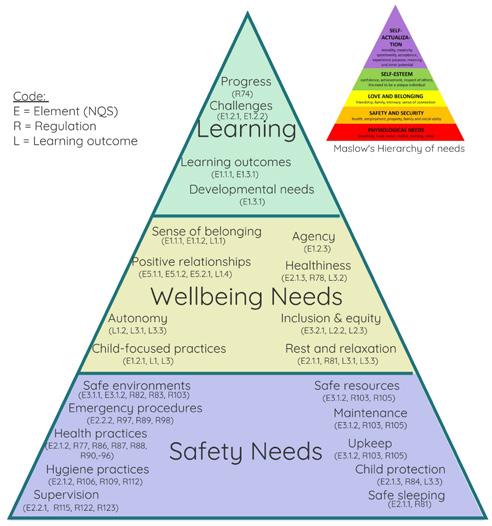
EARLY EDITION > AUTUMN 2024 18
Supporting children’s regulation skills
Self-regulation is something that takes many years to develop, it is not something that is achieved by 5 years old. It continues developing into adolescence and the early twenties. Based on the assumption that self-regulation is developed fully by approximately 25 years old, how then can we expect children to be masters of this by age 2 or 3? How many of us, as adults who have allegedly ‘mastered’ self-regulation, still have days where we just want to lay on the floor and have a tantrum (some of us might even give in to this urge!).
Self-regulation is something that children need support to learn, they need to have it role modelled around them, they need to be supported with co-regulation and they need to be given feedback on their chosen responses to emotions. Telling a child they are ok when they are clearly upset does not help them learn their emotions are valid. Telling children they ‘get what they get and they don’t get upset’ dismisses children’s feelings and shuts down any further discussions. These controlling responses by educators do not allow children to feel and appropriately respond to their emotions, nor do they teach them that emotions are a good thing to have and to show.
Reflect on what language you use around children to acknowledge and validate their emotions and feelings, how educators role model appropriate emotional responses and self-regulation to children, and what feedback children are provided to help them make better choices on how to express their emotions in the future.
Seeing behaviours as agency Agency comes from allowing children the opportunity to make decisions that impact their world. So if we see children’s behaviours as a form of agency, we see them showing us that they are not coping and that their world is not working for them. When we shift our view of behaviours to see them as agency, our role as educators is to identify what needs to change in their world for them to feel better, instead of telling the child they need to change to fit into our world. Remember, we are the ones with better self-regulation skills due to more life experience and practice, so we should be meeting their needs, not the other way around.

When you see a child’s behaviour, reflect on what they are trying to communicate through that behaviour. Are they not coping in that moment, are they overwhelmed by too much information, have they not had enough information, do they not feel safe with a person in their environment, do they need space to just process their emotions, do they have a voice or are things happening to them?

Shifting the language used around behaviour
Behaviour and the way we look at it will impact the way we respond to it, which will either have positive outcomes or may escalate the situation. If we see behaviour as just another need a child has then we see supporting their behaviour needs as just another way to be inclusive and supportive within the service. From this line of thinking a ‘behaviour management plan’ becomes an ‘inclusion support plan’. A ‘behaviour guidance policy’ becomes an ‘inclusive practices policy’. A child with behavioural issues becomes a child in need of support and modifications.
The role of the educator shifts from fixing and controlling the child to supporting and responding to the child.
The easiest way to reflect on your current approaches and practices around behaviour is to put yourself in the children’s place, how would you feel if you were not coping and you were responded to the way you respond to the children? Would you feel safe, supported and valued? If not, what would need to change?
EARLY EDITION > AUTUMN 2024 19
Plants Around Children
Cris Romao > CAECE
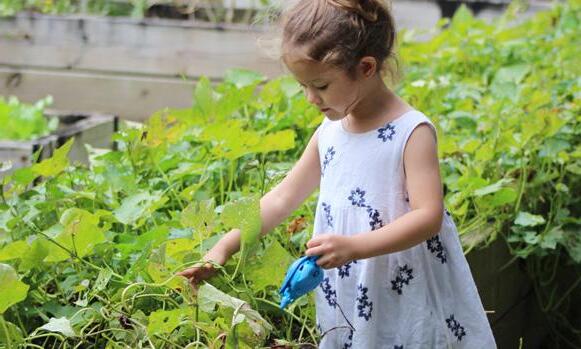
As the conversation around sustainability grows, connecting children to nature becomes increasingly important. Creating opportunities for them to grow, engage, and learn about plants is a simple yet impactful step we can take.
Setting up environments with natural, safe, and aesthetically pleasing plants sparks curiosity and engagement in children, offering a myriad of exploration possibilities.
Here are some guidelines when it comes to having plants around children:
1. Correct Soil: Opt for organic soil, steering clear of any chemicals. Always ensure that hands are washed soon after any interaction.
2. Plant Selection: Consider the purpose of your plants. Are they meant to be sensory tools? African Violets are an excellent choice. Do you want a pleasant fragrance? Native Mint Bush is perfect. Looking for something attention-grabbing? Sunflowers will undoubtedly catch the eye.
3. Caring: Anyone can develop a green thumb with a bit of interest! Local stores like Bunnings can be valuable resources, offering expert guidance. Speak with the store manager to organise incursions or potentially excursions to enhance the learning experience.
Another fantastic way to ignite a love for plants in children is by introducing them to the wonders of a Veggie Garden! Even in tight spaces, the magic of nature can thrive. Some veggies flourish in small pots, making it accessible for everyone. The beauty lies in kickstarting the seeding process – a journey the children can continue at home, overcoming any space constraints.
The key is to keep the excitement alive! Check in regularly, ask questions like, “How are the seeds doing? Is your mini garden flourishing at home? What steps are you taking to ensure its growth?” Dive into the caretaking aspect – who’s looking after it, and is it still thriving? Explore the highs and lows. If a plant faces challenges, turn it into a learning opportunity. Is the child disappointed? Maybe it’s time to plant a new seed, fostering resilience and a genuine, longlasting interest.
Think of it as cultivating not just a passing fascination but a deep-rooted curiosity. Your window frame could be the gateway to endless discoveries. Experiment with different seasonal and fast-growing seeds. Witnessing the transformation becomes a source of joy for children.
And don’t forget the edible flowers – vibrant, safe, and a feast for the eyes! Incorporate them into your gardening adventure for an extra pop of color.
Let’s sow the seeds of curiosity, nurture the process, and watch as the love for nature blooms in these young minds!
Embrace the power of immediate growth for a bountiful harvest! Now is the time to cultivate with speed, reaping the rewards sooner than you think. Choose varieties like loose-leaf lettuce, radishes, both bush and climbing beans, beetroots, cucumbers, and the ever-popular mini and cherry tomatoes. Don’t forget the delightful squash and zucchini – all ready to flourish in your garden.
In the world of herbs, spring onions, basil, chives, oreganos, parsley, and mint await your nurturing touch. Each not only adds flavour to your dishes but also infuses your space with aromatic wonders. And here’s a bonus tip: mint leaves double as a natural teeth cleanser, bringing a refreshing twist to oral care!
Seize the opportunity to witness rapid growth and relish the joy of a quick harvest. Your garden is a canvas, and these plants are your masterpiece in the making. Plant the seeds of possibility today and watch as your vibrant garden comes to life with nature’s speedy bounty!
And remember, if your plants are not thriving, don’t give up! Review your steps, identify issues, and start afresh. In the wise words of John Muir, “In every walk with nature, one receives far more than he seeks.” Embrace the learning curve – everything is part of the journey! ��
Resources you can check out:
https://www.mrfothergills.com.au/little-gardeners.html
https://www.ecoexplorers.com.au/product/kids-seed-kit/ https://littleveggiepatchco.com.au/products/kids-seed-pack
EARLY EDITION > AUTUMN 2024 20

Managing Through Change
Nick Hedges > Resolve HR
As we kick off 2024, it’s apparent that macroeconomic factors such as high interest rates and economic uncertainty will continue to pose challenging times for businesses and individuals alike.
The likely outcome is that some things will need to change in your business: the strategic plan may need an overhaul, the allocation of resources (including people) may need to change, and you may expect that your teams will be under increasing pressure – on both personal and professional levels.
As a business or team leader, there are some key things you can keep in mind, to better manage these unavoidable periods of change:
• So far as is possible – plan ahead. Think about how workplace changes will impact your employees and what the business may be able to do to mitigate the impact to employees. If it’s inevitable that the business needs to restructure and some roles will become genuinely redundant, then ensure you have a well thought out redundancy process. This includes ensuring that your redundancy plan and timeline is in line with legislative requirements and that you have a solid communication plan that considers both impacted and non-impacted employees.
• Revert back to your Company Values and workplace culture – these are likely to become an even more important ‘guiding light’ as people are more likely to experience some form of tension in the workplace. Consider your current company values – can there be a greater emphasis on adaptability and resilience to help through inevitably challenging and changing times.
• Effective communication – Clear and transparent communication is the cornerstone of successful change management. Involve employees and engage them in any change processes; seek their input and listen to concerns. Be transparent about the reasons behind proposed changes. When tough decisions need to be made, be open about the expected impact on employees, and the benefits in a way that is easily understandable. Regular updates through various channels, such as team meetings, newsletters, and one-on-one discussions – more than keeping everyone informed, it builds trust.
• Additional support and resources – consider whether you can implement new initiatives to better support employees during times of stress and uncertainty.
You can get creative with what works best for your workforce and industry, and these don’t always have to involve a big spend to the business. The below initiatives are just some ways that can go a long way to build employee engagement, personal satisfaction, security and confidence.
• Learning and Development training sessions on both technical and soft skills (such as conflict management, improving communication strategy) –this can involve external training but also consider whether your teams can share their knowledge and expertise internally and within other areas of the business.
• Employee Assistance Programs or other counselling support.
• Mentoring programs – these can be run in-house and can be so beneficial to junior and more senior employees alike, as information and knowledge is shared.
Effectively managing through change requires a strategic and people-centric approach. The cost to your business of not adopting a well-planned and well thought out approach to managing change in your business is too great to ignore – the potential for litigation for poorly managed redundancy processes, decline in productivity from disgruntled and disengaged employees and higher ‘regrettable resignations’ as poorly managed change initiatives negatively impact team culture.
If you want to discuss your people team strategy for 2024, you might consider reaching out to a consultancy specialising in providing workplace advice to managers and business owners. Here at Resolve HR, founder Nick Hedges is happy to schedule a complementary call.
Visit www.resolvehr.com.au for more details.
Disclaimer: The contents written do not constitute legal advice and does not cater for individual circumstances. The information contained herein is not intended to be a substitute for legal advice and should not be relied upon as such.
EARLY EDITION > AUTUMN 2024 21
Make Your Sandpit a Standout Asset
A Comprehensive Guide to Design, Construction & Maintenance

Sandpits continue to be among the most popular play areas for children. It’s a setting for makebelieve adventures and storytelling. It’s where they use their motor skills and hone their social interactions. Plus, it’s where they can play free of the obligation to keep themselves clean.
If well designed, built of the right materials, and properly maintained, a sandpit can be a great asset. But it can quickly become a dangerous place for children to play with devastating consequences to your reputation and your business.
With no definitive Australian standards for childcare sandpits, we prepared this comprehensive guideline to help to make your sandpit a stand-out feature and a safe place for children to play.
We did so by drawing on the ACECQA National Quality Framework and the National Health & Medical Research Council (NHMRC) Guidelines along with the recommendations made by national childcare groups.
Design
Size
When it comes to a sandpit, size does matter, and the overall size should be calculated based on the number of children:
• 15m2 for 20 children
• 30m2 for 40 children
• 40m2 for 60 children
Sand Depth
Unlike a standard playground where the minimum loose surface cover is 200mm, a sandpit is a place where children will actively move the surface material. So, the recommended depths are:
Minimum: 450 to 500mm
Boisterous digging: 600 mm+
Gravel Allowance: Extra 150mm
Choice of Sand
When it comes to sand, there are 3 options to choose from:
1.
Kinetic
• Combines natural sand with cornstarch and oil.
• Has a smooth, softer texture.
• Has a polydimethylsiloxane coating (silicone-based non-toxic organic polymer).
• Coating makes the sand stick together so it’s easy to mould into shapes without water.
• More expensive than any natural or processed sand.
2. Natural
• Harvested from the beach, river, or desert.
• Is formed naturally as a result of weathering, erosion of coral or small rocks.
• Requires cleaning and filtering to ensure the particles are fine.
• The coarse texture makes it easy to clean.
3. Processed
• Man made not naturally formed.
• Material is extracted from quarries, gravel pits and dredges.
• Material is then crushed, washed, and cleaned to ensure it is safe.
• Particles are typically smooth and refined to allow for moulding with little water.
EARLY EDITION > AUTUMN 2024 22
Graham Henrickson > Food Safety eLearning Academy
The best play sand is fine white double or triple washed river/beach sand with:
• Rounded particle profile.
• A grain size around 1.25mm.
• 4.5 cubic metres of sand would be needed for a sandpit 3.5m x 2.7m and 450mm deep.
AVOID
• Sand containing silica dust which is harmful if inhaled in large quantities.
• Coarse gritty sands such as granitic sands,
• Strongly coloured sands that can stain clothes.
Water & Drainage
Access to clean water
A well-placed tap and a hose connected to the mains, a water tank or a bore is essential to fill the moat that surrounds a castle or to stage the dramatic scene when a river bursts its banks. It also allows for cleaning the sand and washing sand off little hands and feet at the end of play.
Drainage
Without effective drainage, the sand is likely to remain damp for longer, which will limit play time and is sure to cause disappointment.
Before doing anything, we suggest checking if Local Government regulations apply and seeking advice from a registered plumber.
Among the most common method of drainage are:
• A drainage membrane /geotextile fabric separating the sand from the gravel subbase.
• Agricultural pipes in the gravel and connected to storm water.
• A sump below the level of the sand.
Shade
Young children can spend considerable amounts of time in a sandpit. So, protection from the sun, wind, and rain is essential. While natural tree cover may be visually more appealing it will require more vigilance to control falling branches, sticks and leaves.
There are many shade options to choose from and the decision should be governed by what best suits the environment and what is most practical. This could be a solid covering to enable sand play even in wet weather, or a pergola/suspended pulleys with sails.
Here are some of the most popular choices:
• Roof or veranda.
• Pergola.
• Deciduous trees or creepers.
• Large umbrellas anchored securely.
• Makeshift awnings of shade cloth or other fabric tied to trees or buildings.
• Roll up awnings.
• Shade sail.

professional advice on quality shade for play spaces.
Construction
Flush or Raised
A sandpit can be either flush to the ground or with a raised perimeter. Both types of edging have advantages and disadvantages. In making your decision it is important to consider easy access for a child in a wheelchair. Regardless of the height, a paved surround of about 700 mm wide provides an easy to sweep surface that helps keep the sand in place and is good for children pushing toy cars around.
Flush
• Easy to sweep sand back.
• Easier access for disabled children.
• More likely to spill out, causing a slippery surface on paving.
Raised
• Helps to prevent spillage.
• Can be designed to provide seating or perching, or a shelf for children to work on.
• A trip hazard if too low (if less than 100 mm).
• A fall hazard if too high (more than 300-500mm for grass or 125-200mm for concrete/brick).
• May be difficult for younger children if higher than 200 mm.
• Need to consider the likelihood of hooks for attaching covers.
Edging/Construction Materials
For child safety, the inner edge facing the sand should not have any sharp edge/corners or a rough surface.
Timber
• Must be durable and treated timber for in ground usePine or Merbau decking boards are ideal.
• Ensure the timber is not treated with CCA or creosote.
• Apply a non-arsenic-based treatment to Pine.
• Merbau is a hardwood and doesn’t need a treatment applied to it apart from the oiling process.
• If in direct contact with the ground, timber should be treated with bitumen paint on the sides where it will be in contact with the earth. This will prevent water from being wicked up into the timber and causing early decay.
EARLY EDITION > AUTUMN 2024 23
• Smooth timber with rounded edges to avoid splinters.
• Bolts, hooks, nails, and other fixing devices must be recessed so that they do not protrude.
Brick & Concrete
• Inexpensive.
• Long lasting.
• Flexible shape and design.
• Unforgiving surface with falls.
• Costly to remove or change.
Rocks
• Natural/organic style.
• Can inspire creative play.
• 300-700mm across and 300-450mm high.
• Should be positioned so they cannot be moved or tilted.
• Must have any sharp edges rounded off and include flat surfaces for sitting.
• Can cause injuries.
• Can be slippery when wet.
Synthetics - Rubber or ‘Anti-Stumble’ Polyurethane
• Ideal to mitigate injuries from falls where there are children with mobility and balance problems.
• Useful if a very small yard.
• Can be costly.
FOOD & SAND DON’T MIX
Sand can contaminate food - food attracts pest –and pests can sting and bite.
Cover
Sandpits must be protected with a tight-fitting cover when not in use or when the childcare service is closed/ unattended.
• Must be animal and vermin proof.
• Capable of protecting the sand from foreign objects (particularly those that are sharp or dangerous).
Covers made from shade cloth appear to be the most popular as they prevent animals like cats from using the sand as a litter box, yet they allow air to circulate and prevent water from pooling on top of the cover.
• The cloth can be cut to suit irregular shapes if necessary and then attached to a piece of weighted PVC pipe. In some cases, providers have sewn heavy galvanised chain in the hem to keep the cover in place.
Some general principles to consider are:
• Must be easy for an adult to remove daily to aerate the sand.
• Made from durable material.
• Allow sun and rain to penetrate.
• Can be stored safely when sandpit is in use.
Plants & Ground Cover
Some suggest that on at least one edge that faces the sandpit should have low-level planting or ground cover shrubs. When it comes to plants along the edge of a sandpit, we recommend a cautious commonsense approach to ensure it enhances the play experience and doesn’t attract bugs and insects that bite.
Sand vs Soil & Digging
There is a compelling argument that as well as a traditional sandpit, there should also be an area where children can play with soil. This is a separate space for making mud pies, building dams, playing with toy cars, or plain digging.
The site should be away from underground services and the same guidelines for construction would apply. Only in this case the depth needs to be 500 to 600 mm and a mixture of loose soil mixed with some sandy loam works best. This area would need to be turned over regularly to prevent the soil from compacting.
A digging patch provides the opportunities for large muscle play given that metal spades are often used. For this reason, it must be sited where it can be easily seen and supervised by staff and is best located away from main traffic areas. Given this tends to be a messy area of play, it’s advisable to locate away from entry doors to avoid the trampling of mud indoors.

EARLY EDITION > AUTUMN 2024 24
Cleaning
Keeping a sandpit clean and dry will ensure it is a happy and safe place for children to play.
Daily Cleaning
A sandpit requires daily management, and the duties need to be documented and allocated to a specific member of staff. These might include:
• Remove cover and secure in safe place.
• Sanitise hands/check that sanitiser container is full and working.
• Check sand is sufficiently dry for play.
• Rake sand to check and remove any foreign objects.
• Ensure tap/hose is turned off and secure.
• Sanitise hands when finished.
Weekly
In addition to this daily routine, consideration should be given to hosing the sand each week with clean water.
Contaminated Sand
Sand can become contaminated with animal or human faeces, blood, or other body fluids. It is likely that you will face these circumstances at some stage. If so, here is how to deal with it:
1. Address it immediately.
2. Clear the sandpit of children and toys.
3. Put toys aside to be cleaned and sanitised separately (if needed).
4. Remove the contaminated sand using a shovel and dispose of the sand in a plastic bag or alternative. The remaining sand should be raked over at intervals during the day and left exposed to the sun.
5. Replace the removed sand with fresh sand and rake into existing sand.
In the event of significant contamination/ large spill - remove all the sand from the sandpit and replace it with new.
HAND WASHING
Adults & Children must clean their hands with either soap and water or hand sanitiser both before and after playing in a sandpit or soil.
Periodic Cleaning & Sanitising Play Sand
Play sand should be cleaned and sanitised periodically. How often depends on the specific circumstances but at least once a term should be the starting point. There are 3 options, but regardless of the options the sand should first be raked and if necessary, use a kitchen sieve to remove any foreign objects.

Option 1. Wash and Heat
Please note that this option is time consuming and labour intensive.
• Remove sand and wash repeatedly in buckets with clean water until all floating material and dirt is removed and water is clear.
• Then empty bucket onto trays and place in oven on high heat to dry and sanitise the sand.
Option 2. Sodium Hypochlorite
Prepare a solution of diluted sodium hypochlorite.
• 400 grams to 20 litres of water will treat 8 cubic metres of sand.
• Prepare using plastic utensils and apply using a plastic watering can and rinse these well immediately after use.

• Simply water the sand with this solution and allow to dry in the sun and then rake the sand well to aerate.
• Do not use metal bucket/ watering can or utensils.
• As with all chemical products – these must be stored in a safe place and out of reach to children.
Option 3. Play Sand Sanitiser
A number of companies now produce sanitiser developed specifically for play sand and it is important to read and follow the manufacturer’s instructions.

• These are bottled chemicals to be mixed with water and then sprayed over the sand.
• After spraying, the sand should be left to dry in the sun before being raked for aeration.
• As with all chemical products – these must be stored in a safe place and out of reach to children.
Copyright
Food Safety eLearning
EARLY EDITION > AUTUMN 2024 25
2023 The
Academy W: www.fsea.au E: admin@fsea.au
Thinking of Selling Your Centre in 2024?
Hilary Knights > Qld Director Childcare Concepts

How to be strategic and position your centre for sale
With the start of a new year many centre owners have had the opportunity to take a step back over the holiday period and evaluate their plans for the coming year. If this is the year you wish to sell your centre or divest part of your centre portfolio it is important you develop a strategic blueprint for your exit.
Childcare Concepts is delighted to share their knowledge with ACA Qld members in the first of a four-part series of articles providing you with a strategic roadmap to get your centre sale ready and maximise your return.
Be Fully Committed and Engage with a Specialist Childcare Broker
If you are ready to list your centre and reap the rewards from your hard work in creating a childcare centre in your local community, choose a specialist childcare broker rather than a generalist broker. You need to work hand in hand with your broker to make your centre an attractive proposition for a potential purchaser. Specialist childcare brokers have extensive networks of the potential purchasers which in turn provides a faster sale for you.
Discuss your options, learn how a specialist childcare broker will negotiate on your behalf to get the best possible result for you and gain an understanding of the sales process. Just like your trusted network of professionals, a childcare specialist broker is an expert in marketing, negotiation and selling. A specialist childcare broker can support you in anticipating issues before they arise, negotiating to get you the price you want all while navigating and supporting you through a complex and multifaced sales process.
Undertake a Financial Health Check
Work with you broker to evaluate your centre’s financial health to ensure that key metrics such as rent, and wages are in line with industry benchmarks and identify any areas of improvement such as reducing parent debt before you go to market – whether discreetly or via a full marketing campaign. Your specialist broker will be able to assist with
industry benchmarks, reviewing financials and provide guidance regarding add backs (add back any personal expenses put through the business) and normalising expenses (to reflect one off costs, capital expenditure etc.) in conjunction with your accountants to determine a sale price as part of their business appraisal.
Get your Documentation Ready
Collaborate with your broker to create a detailed Information Memorandum (IM) which provides a comprehensive overview of your centre for prospective purchasers. This enables your broker to highlight your centre and attract and pre-qualify prospective purchasers. Working through a pre-sales documentation checklist with an experienced broker provides an opportunity to get your documentation ready for potential purchasers and enables your broker to anticipate any issues before they arise.
Understand the Sales Process
Listing your centre is a complex and multifaceted process with many legal and legislative obligations. A specialist childcare broker will go through each step of the sales process in detail with you from appointment of agent, data collection, marketing, viewings, negotiations, offers and contracts, through to the important element of facilitating staff meetings for your staff to meet the purchasers just prior to settlement as per legislative requirements, settlement and your statutory obligations upon selling your centre. With professional guidance from a specialist childcare broker, you will be able to make informed decisions at every stage.
Now is the time for proactive preparation if you wish to sell when your occupancy is on the rise at the start of the year, recently increased daily fees and more – all ensures your centre is operationally ready to be well positioned to maximise your sale price.
In the second instalment of our four-part series, we’ll discuss each step in the selling process in detail.
Childcareconcepts.com.au
EARLY EDITION > AUTUMN 2024 26
STEP 1
Discovery Meeting
We meet in person or via phone/zoom to discuss your expectations, the centre’s/s’ operational attributes and our marketing program. This meeting can be held, after hours, on or off site but at all times we are discreet, so staff are not aware of the potential sale.
STEP 3
Marketing Campaign
We work with all corporate groups through to small independent operators. We have discreet discussions with our extensive database of pre-qualified purchasers to match their acquisition profile with your offering. At times we will send a communications piece to our database to alert them of the new listing. However, this will have non-identifying descriptions – again to maintain discretion and confidentiality at all times. We undertake all marketing activities at our own cost so there is no additional cost for you, the client.
Our Sales Process
STEP 5
Centre Viewings
We will organise centre viewings outside of the centre’s operating hours to show prospective purchasers through the service.
STEP 7
Due Diligence Phase
We will support you throughout this stage and will assist with any discussions where needed to ensure this stage is smooth for you. Given our careful prequalification of prospective purchasers and knowing their purchasing profiles we ensure that many due diligence areas are covered in a timely manner even before this stage to ensure a sale at the end of this process.
STEP 2 Source Documentation
In order to present our listing professionally we source all relevant information from you and develop a comprehensive Information Memorandum (examples available upon request). This places your centre in the best position with all relevant and up to date information so that we can pre-quality prospective purchasers and answer all initial questions prior to viewing your centre. During the sale period we do ask that you provide us with regular occupancy reports to ensure we are advising of the latest occupancy figures to prospective purchasers.
STEP 4 Enquiries
We work through all buyer approaches and enquiries to pre-qualify interest, so we maximise everyone’s time.
STEP 6
Offer
We will present all offers to you as our client and discuss the merits of each offer.
STEP 8 Settlement and Handover
During the last few weeks, we will work with you and your solicitor to ensure all is completed for handover and your centre is ready for settlement. We look forward to acknowledging and celebrating your sale and working with you again on any further sales or acquisitions in the future.
EARLY EDITION > AUTUMN 2024 27



















EarlyEdition
We’re always looking for fresh content and ideas from our members, for our members. Be part of important discussions about the early learning sector by submitting your article!
Some topics we like to include are, health & nutrition, workplace health & safety, technology & innovations in early learning, educator health & wellbeing, and more!
Please note that we do not accept articles of an advertorial nature, and all submissions are subject to approval.
Looking to gain brand-awareness?
Check out our advertising packages! We have several advertising opportunities available all year round, including in our quarterly magazine.
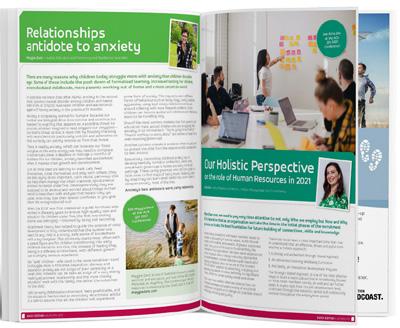
Contact us at qld.marketing@childcarealliance.org.au

Get involved in future Early Edition magazines!
or see our Media Kit for more information


Con’grad’ulates

RTO: 40933
CAECE is delighted to present recent graduates who have completed their Certificate III in Early Childhood Education and Care and Diploma of Early Childhood Education and Care.
Over the last quarter we have had the opportunity to congratulate CAECE graduates from our Diploma, Certificate III, and Certificate II qualifications. With the ongoing support from our lovely CAECE trainers, students have been guided to achieve their goals in becoming fully qualified educators.
If you, or someone you know, are interested in studying and working towards your qualifications in early childhood education and care, our friendly team and trainers are willing to guide and support your early learning journey! For more information please contact our team on 07 3299 5784 or email admin@caece.com.au
CAECE would like to congratulate the following graduates and wish them all the best for their future as an early learning educator!
CAECE graduates for the last quarter:
Aksana: Little Bunyas Early Childhood Centre of Waterford - Certificate III (Trainer Melissa)
Alannah: Edge Early Learning North Pimpama - Certificate III (Trainer Melissa)
Alexandria: Educating Kids Childrens Centre Townsville - Diploma (Trainer Lainie)
Angelica: Ascot Childcare And KindyCertificate III (Trainer Sue/Elisha)
Anita: Excellent Kids Montessori
Underwood - Certificate III (Trainer Pauline)
Ashley: The Hills Montessori Alexander Hills - Certificate III (Trainer Brooke)
Becky: Guardian Childcare and Education
Augustine Heights - Certificate III (Trainer Arielle)
Brianna: Harristown State High SchoolCertificate II (Trainer Danielle)
Brittany: C&K North Caloundra Community Caloundra - Certificate III (Trainer Maria)
Bronwyn: Perfect Beginnings EMP Centre 2 Eight Mile Plains - Certificate III (Trainer Pauline)
Cassidy: The Kidz Cubby Educational Centre Morayfield - Certificate III (Trainer Maria)
Courtney: Good Life Kindergarten & Child Care Logan Reserve - Certificate III (Trainer Elissa)
Darcy: Harristown State High SchoolCertificate II (Trainer Danielle)
Elisha: Good Life Kindergarten & Child Care Logan Reserve - Certificate III (Trainer Elissa)
Emily: Eastwood Early Education
Toowoomba - Certificate III (Trainer Danielle)
Emma: Treasure Island Childcare Centre Clifton - Certificate III (Trainer Danielle)
Eva: Harristown State High SchoolCertificate II (Trainer Danielle)
Fynleh: Barefoot Early Childhood Dayboro - Diploma (Trainer Sue)
Hannah: Coomera Clubhouse (Centre 2) Coomera - Certificate III (Trainer Holly)
Holly: Little Scholars School of Early Learning Redland Bay South - Diploma (Trainer Brooke)
Isabella: Little Scholars School of Early Learning Redland Bay South - Diploma (Trainer Brooke)
Isobela: Bask Early Learning Springwood - Certificate III (Trainer Pauline)
Jade: Excellent Kids Montessori Underwood - Certificate III (Trainer Pauline)
Jessica: Cottage Academy ClontarfCertificate III (Trainer Sue/Maria)
Kazheen: Harristown State High School - Certificate II (Trainer Danielle)
Keeley: Busy Bees WarwickCertificate III (Trainer Danielle)
Kiara: Green Leaves Early Learning North Shore - Burdell - Certificate III (Trainer Lainie)
Kristy: Busy Bees MitcheltonCertificate III (Trainer Sue/Elisha)
Kylie: Little Scholars School of Early Learning Stapylton - Diploma (Trainer Melissa)
Lexii: Harristown State High SchoolCertificate II (Trainer Danielle)
Lottie: Lullaby Early Learning Centre Varsity Lake - Certificate III (Trainer Sonja)
Maddison: Harristown State High School - Certificate II (Trainer Danielle)
Maeve: Harristown State High SchoolCertificate II (Trainer Danielle)
Mia: Ascot Childcare And KindyDiploma (Trainer Sue)
EARLY EDITION > AUTUMN 2024 30
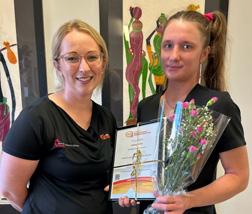


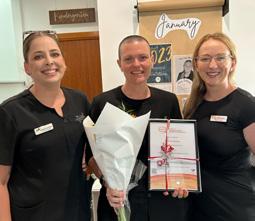


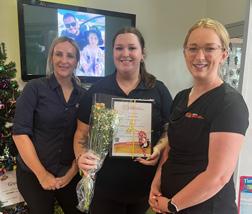



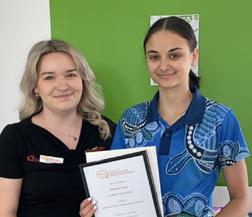
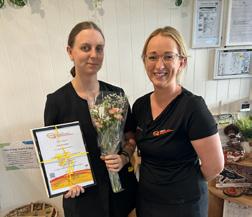




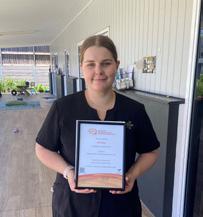
Michaelly: Petit Early Learning Journey Burdell - Diploma (Trainer Lainie)
Mikayelah: Little Scholars School of Early Learning Ormeau VillageCertificate III (Trainer Melissa)
Monique: Young Discoverers Helensvale - Certificate III (Trainer Ammie)
Natasha: Bright Horizons Australia Childcare Ormeau Hills - Diploma (Trainer Melissa)
Navaeh: Harristown State High SchoolCertificate II (Trainer Danielle)
Paul: Little Scholars School of Early Learning Pacific Pines - Certificate III (Trainer Melissa)
Rikki-Lea: Bluebird Early Education Waterford - Certificate III (Trainer Pauline)
Sarah: Imagine Early Learning Centre West End (TSV) - Certificate III (Trainer Lainie)
Shakayla: Bask Early Learning Springwood - Certificate III (Trainer Pauline)
Shakira: Harristown State High SchoolCertificate II (Trainer Danielle)
Sharna: Little Bunyas Early Childhood Centre of Waterford - Certificate III (Trainer Melissa)
Sophie: Beattie Road Early Childhood Education C Coomera - Certificate III (Trainer Melissa)
Steffani: Mundubbera Family Day Care Nth Bennett Region - Certificate III (Trainer Melissa)
Svetlana: Flagstone Early Learning Flagstone - Certificate III (Trainer Elisha)
Zali: Little Scholars School of Early Learning Redland Bay South - Diploma (Trainer Brooke)
Zara: Little Scholars School of Early Learning Ormeau Village - Certificate III (Trainer Melissa)
EARLY EDITION > AUTUMN 2024 31
AKSANA ALANNAH
KYLIE
ALEXANDRIA
MONIQUE
SARAH NATASHA
MIKAYELAH
SHARNA
SOPHIE
SVETLANA
ZARA
HOLLY
LOTTIE
ASHLEY
SHAYNA
ZALI
Supporter Members Directory
EARLY EDITION > AUTUMN 2024 32 Service Contact Email Phone Web Accounting, Bookkeeping & Financial Accounts Advantage Krish Ravipati krish@accountsadvantage.com.au 07 3209 8266 accountsadvantage.com.au Elston Kelly Stubberfield Kelly.Stubberfield@elston.com.au 1300 357 866 elston.com.au ShineWing Australia Jeremy Wicht jwicht@shinewing.com.au 07 3085 0888 shinewing.com.au William Buck Ben Manera benjamin.manera@williambuckqld.com.au 07 3229 5100 williambuckqld.com.au Banking Services ANZ Health Jason Clayton jason.clayton@anz.com 0466 503 507 anz.com Brokers Childcare Concepts Hilary Knights hilary@childcareconcepts.com.au 0407 572 725 childcareconcepts.com.au Building & Property Blue NRG Chris Koulianos chris.koulianos@bluenrg.com.au 1300 599 888 bluenrg.com.au Bunnings Sal Russo srusso@bunnings.com.au 0439 150 843 bunnings.com.au Express Glass Beth Pope bethp@expressglass.com.au 0420 375 240 expressglass.com.au GC Test & Tag Nick Katra nick@gctestandtag.com.au 07 5518 7833 gctestandtag.com.au Jardine Architects Greg Jardine greg@jardinearchitects.com.au 07 3229 9322 jardinearchitects.com.au Jorgensens Tim Cox info@jorgensens.com.au 07 5597 6620 jorgensens.com.au Mathiou Services Jamie Mathiou connect@mathiouservices.com.au 1300 363 423 mathiouservices.com.au Mollard Property Group Wendy Mollard wendy@mollard.com.au 03 9225 5254 mollard.com.au Surface Pro Ryan Lange admin@surfaceprogroup.com.au 1300 521 612 surfaceprogroup.com.au Wearthy Vanessa Ritson vanessa@wearthy.co 0413 485 574 wearthy.co X-ALT Solar Brian Mills brian@x-altsolar.com.au 0402 658 313 x-altsolar.com.au Consultants & Management Absolute Support Training & Resources Darlene Wadham darlene@absolutesupport.com.au 0488 666 455 absolutesupport.com.au Childcare Hive Lauren Simpson lauren@maatcollective.com.au 0456 006 200 childcarehive.com.au Early Learning Management (ELM) Naomi Freney naomi@elm.net.au 07 5592 5800 elm.net.au Employer Services Gil Muir reception@employerservices.com.au 07 3220 3500 employerservices.com.au/contact G8 Education G8 Education Team info@g8education.edu.au 07 5581 5336 g8education.edu.au Giggletree Samantha Ahearn samantha@giggletree.com.au 07 3482 2490 giggletree.com.au Guardian Early Learning Group Warren Bright contact@guardian.edu.au 1300 217 570 guardian.edu.au Holistic Management and Consultancy Mel Calci mel@holisticmanagement.net.au 0417 664 189 holisticmanagement.net.au Kids and Adults Learning (KAL) Annette Cunado info@kal.net.au 1300 783 880 kal.net.au Ready Now Resources Louise Thomas Louise@readynowresources.com.au 0410 456 607 readynowresources.com.au Resolve HR Nick Hedges nick@resolvehr.com.au 0433 139 445 resolvehr.com.au ROSE Way Consultants Carrie Rose carrie_rose@icloud.com 0410 671 971 therosewayplanning.com The Scholars Group (Scholars Consulting) Rebecca Gunn rebecca@thescholarsgroup.com.au 1300 018 308 thescholarsgroup.com.au Insurance Services Guild Insurance Laurence Capel lcapel@guildinsurance.com.au 0434 425 975 guildgroup.com.au Legal Services Porta Lawyers Giovanni Porta giovanni@portalawyers.com.au 07 3265 3888 portalawyers.com.au Software & IT Support 1Place Online Martin Bing martin@1placeonline.com 1800 416 431 1placechildcare.com Child Care Central Claire support@childcarecentral.com.au 1300 733 667 childcarecentral.com.au ChildCareCRM Pikka Turangan pturangan@childcarecrm.com 02 8880 0404 childcarecrm.com ChildcareNow Nathan Davies nathan@childcarenow.com.au 0431 622 920 childcarenow.com.au ChildHR | DiffuzeHR Barry Lehrer barryl@diffuze.com.au 03 9115 3900 childhr.org.au Daitum Theo Noel Theo.noel@daitum.com 0416 050 323 daitum.com Kangarootime Sharyn Fewster sharyn@kangarootime.com 1300 993 226 kangarootime.com Kidsoft Peta Hagger peta@kidsoft.com.au 1800 827 234 kidsoft.com.au LineLeader by ChildcareCRM Pikka Turangan pturangan@lineleader.com 02 8880 0404 childcarecrm.com OWNA Kheang Ly kheang@owna.com.au 0415 318 001 owna.com.au
EARLY EDITION > AUTUMN 2024 33 Service Contact Email Phone Web Rubiks iT Andre Campbell andrecampbell@rubiksit.com.au 07 5613 1889 rubiksit.com.au Toddle (Care for Kids) Ash Sachdev ash@careforkids.com.au 0402 425 661 toddle.com.au Xap Childcare Solutions Sean Murphy sean@xap.com.au 1300 543 792 xap.net.au Xplor Education Emma Booth emma.booth@myxplor.com 0434 431 812 ourxplor.com Sport, Fitness & Health Delivering Dental Simran Patheja admin@deliveringdental.com.au 0410 603 393 deliveringdental.com.au Dental2you Larissa Curtis admin@dental2you.net 0478 883 830 dental2you.net Ginger Sport Melanie Reynolds info@gingersport.com.au 07 3890 3338 gingersport.com.au Kids Gourmet Food Ray Bondzulic RayB@kidsgourmetfood.com.au 0407 006 068 kidsgourmetfood.com.au Physi Kids Kayleen Tolley info@physikids.com.au 0414 559 997 physikids.com.au Telus Health LifeWorks Kylie Hancock kylie.hancock@telushealth.com 0477 612 819 telus.com/en/health The Wellbeing Food Company Brad Teys brad@wellbeingfood.com.au 0411 733 555 wellbeingfood.com.au Staff Recruitment Expect A Star Amanda Lawson amanda@expectastar.com.au 1300 669 653 expectastar.com.au Newhill Recruitment Elise Charriere elise@newhill.com.au 0488 686 196 newhill.com.au Rostaboss Angie Cooper info@rostaboss.com.au 07 5647 3443 rostaboss.com.au Superannuation Child Care Super Ben Fagan BFagan@guildtrusteeservices.com.au 1800 810 213 childcaresuper.com.au HESTA Super Fund Joanne Fenton jfenton@hesta.com.au 07 3223 4906 hesta.com.au NGS Super (incorporating QIEC Super division) Kate Graham Kgraham@ngssuper.com.au 0437 516 830 ngssuper.com.au Toys, Resources & Suppliers ABC School Supplies Graham Bone info@abcschoolsupplies.com.au 07 3823 2999 abcschoolsupplies.com.au Bellbird Kidz Georgia Murray gmurray@bellbird.com.au 03 8795 6904 bellbirdkidz.com.au Croft Care David Croft david@croft.net.au 07 3274 3900 croftcare.com.au EducationAll Australia Julie Rowan julie@educationall.com.au 1300 044 984 educationall.com.au H Pro Pty Ltd William White william@hpro.com.au 07 3041 4132 hpro.com.au Hunter Industrials David Blench david.blench@hqld.com.au 07 3054 1039 huntind.com.au Macrosphere Pty Ltd Margaret Robbins mrobbins@macrosphere.com.au 07 3102 1111 macrosphere.com.au Modern Teaching Aids (MTA) MTA Team sales@teaching.com.au 1800 251 497 teaching.com.au OfficeWorks Caitlin McKenzie clmcken2@officeworks.com.au 07 3624 5695 officeworks.com.au PSE Preschool Equipment Karen Clark info@preschoolequipment.com.au 1300 555 972 preschoolequipment.com.au Starex Inspiring Manufacturing Monique Denham monique@starex.com.au 07 3709 3336 starex.com.au Step4 Melinda Neal melinda@step4.com.au 0466 126 714 step4.com.au Training Providers ACE Community College Robyn Keenan Robyn.k@acecolleges.edu.au 07 5520 3026 acecolleges.edu.au ACTAC - Australian College of Teacher Aides and Childcare Erin Winsbury ewinsbury@actac.com.au 1300 511 455 actac.com.au Australian Internships Sue Beck sue@internships.com.au 07 3011 9405 internships.com.au CAECE - College for Australian Childhood Educators Cris Romao manager@caece.com.au 07 3299 5784 caece.com.au ECTARC (Early Childhood Training and Resource Centre) Jan Langtry info@ectarc.com.au 07 3290 2966 ectarc.com.au Farran Street Education Adrian McLean education@farranstreet.com.au 1300 366 896 farranstreeteducation.com.au Food Safety Solutions QLD Narelle Davis admin@foodsafetysolutionsqld.com.au 0481 817 233 fssqld.com In Safe Hands Educators in Safety Michael Pecic enquiries@insafehands.net.au 1300 794 644 insafehands.net.au Oscar Care Group Nicole Buettel info@oscarcaregroup.com.au 03 9560 1844 oscarcaregroup.com.au Phoenix Support for Educators Sandi Phoenix admin@phoenix-support.com.au 1300 361 243 phoenix-support.com.au PST Training Store Danielle Peters danielle@trainingstore.fish 1300 399 665 trainingstore.fish Triple P PECE Program The PECE Team contact.au@peceprogram.net 07 3236 1212 triplep.net We Belong Education Saurubh Malviya info@webelongeducation.com 0430 015 526 webelongeducation.com Wildlings Forest School Nicki Farrell nicki@wildlingsforestschool.com 0432 874 068 wildlingsforestschool.com Valuers Herron Todd White Simon Fox simon.fox@htw.com.au 07 3002 0900 htw.com.au Knight Frank Valuation & Advisory Queensland Darren Trivett darren.trivett@qld.knightfrankval.com.au 0419 776 008 trivett.net.au






















See the Wonders of Early Education ACA Qld 2024 National Conference 14-16 June 2024 | The Star Gold Coast www.childcareconference.com.au Register before 31 March 2024 for Early Bird prices!






















































































































